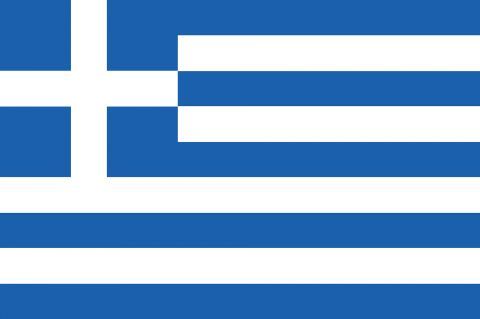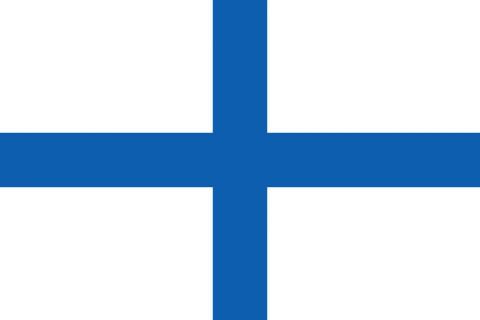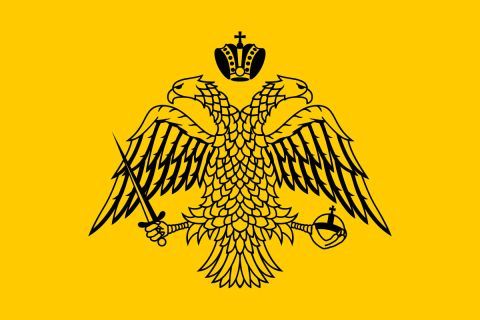Flags of Greece

The Flag of Greece changed many times throughout history. It is today recognized by the blue and white colors on it. Often referred to as the "blue-white", the present flag is based on nine horizontal stripes of blue alternating with white. On the top left, there is a blue square canton with a white cross, a symbol of Greek Orthodoxy, the established religion of the Greeks. But the flag changed a few times during the Greek history.
Information about the National flag of Greece, the flag of revolution and the flag of the Greek church.

The National Flag
This flag of Greece was officially adopted by the Greek state in 1978, that is pretty recent, and the exact shade of the blue color has not been officially issued, so it may vary from light blue to dark blue. However, this has not been the official flag of the Greek State for many centuries, but it first appeared in the First National Assembly that took place in January 1822 in Epidaurus, less than a year after the beginning of the Greek Revolution against the Ottoman Turks.
According to tradition, the nine stripes represent the nine syllables of the phrase "Freedom or Death" (E-le-fthe-ri-a i Tha-na-tos in Greek), the motto of the Greek Revolution. The blue and white colors have been identified as the traditional colors of Greece: blue symbolizes the sky and the sea, white symbolizes the clouds and the waves.

The Flag of the Revolution
However, before the creation of this flag in the early 1820s, there were other flags to symbolize the Greek nation. Particularly popular was the flag of the 1769 uprising, with a blue cross in a white background. This design was widely used in battles in the Greek Revolution of 1821. It was in this flag that the leaders of 1821, such as Theodoros Kolokotronis and Andreas Miaoulis, took the vow to fight for liberation.
Such a flag is kept today in the Monastery of Agia Lavra in Kalavryta, where the Revolution was declared for the first time. Such a flag also stands over the Historical Museum of Athens, the building of the Old Greek Parliament.
This flag had also received some additions along with history. For example, King Otto, the first king of Greece (1833-1862) had put his coat of arms in the center of the cross and George I, the second king of Greece (1863-1913) put a crown. All these symbols were removed by the Regime of the Colonels (1967-1973).

The Flag of the Orthodox Church
The impressive thing is that it remains unknown how this "blue-white" flag was inspired by the members of the First National Assembly, as there was no sign for its existence in the past. In fact, the Byzantine flags, which were a lot in number, had various symbols and colors. The flag of Constantine Paleologos, the last Byzantine Emperor, was purple and gold.
Although today it is believed the flag that the Church of Greece presently uses was actually the flag of the Byzantine Empire, there is no proof for this. The double-headed eagle that looks on the east and the west on a yellow background is indeed the symbol of the Greek Orthodox Church and you will see it outside many monasteries and churches, however, there is no sign how it was created.
Some believe that this eagle represents the strength of the Byzantine Empire that extended from the east to the west and that the Church uses it today to remind the pilgrims of the strong influence that is used to exercise during the Byzantine Times, which means that it used it as a sign of power and glory.
The flags that you will more frequently see today in Greece is the flag with the stripes and the double-headed eagle. The flag with the cross in the middle is no longer used and you will find it only in museums. The Greek National Flag celebrates on October 27th, a day before the Greek National Holiday for the resistance in the Second World War, when the Italian troops invaded the country in 1940.


